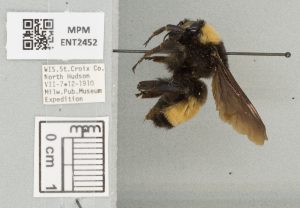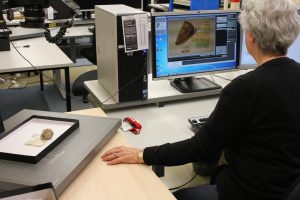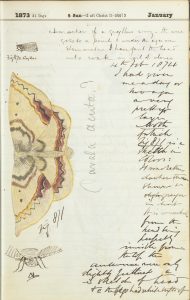
DigiVol is a collaboration between the Atlas of Living Australia and the Australian Museum, and was launched in 2011 initially as an experiment in crowd-sourcing. The Australian Museum wanted to see whether there were online volunteers willing to help natural history collections capture data. Most people thought this idea was a bit far fetched at the time as crowdsourcing was in its infancy and there were no other museums providing online volunteers with an opportunity to help digitise their natural history collections.
Now, DigiVol has not only become a means for Australia’s museums to tackle the enormous task of digitising their collections, but institutions like the Smithsonian, New York Botanic Gardens, Harvard University, South African National Biodiversity Institute, University of Hawaii, Natural History Museum (London) and Kew Gardens have also chosen DigiVol to host their own virtual expeditions and digitise their collections. Initially designed for natural history collections, galleries, libraries, archives and museums (such as Queensland State Archives, National Gallery of Australia) have also adopted DigiVol to help them in the process of digitisation.

By April 2018, Digivol has signed up 3,000 volunteers and completed 880,000 transcriptions. These milestones represent a monumental contribution to digitising the collections of museums and herbaria from Australia and around the world.
Through DigiVol, volunteers are helping collection owners to make their research material available to everyone online. The data has many uses but most importantly it can help scientists and planning officials better understand, utilise, manage and conserve Australia’s precious biodiversity.
“DigiVol is an incredible tool enabling digital collections from all around the world to be transcribed into a digital format by volunteers. In addition to opening up physical collections previously hidden away in museum drawers, DigiVol is also unlocking the remarkable talents of a dynamic and motivated volunteer workforce – we are continually amazed at the amount of quality work our DigiVol community undertakes,” said Rhiannon Stephens, DigiVol Coordinator, Australian Museum.
For more information about DigiVol’s role in the global effort to digitise collections, follow these links:
-

Object from Museum Victoria collections. Image credit: Museum Victoria Digitising our biological collections: an article, and excellent video, from National Research Collections Australia on CSIRO’s sustainability blog, ECOS.
- DigiVol website: register to become a DigiVol volunteer, or view digital collections online.
- DigiVol newsletter: the most recent newsletter sent to all registered DigiVol volunteers.
-
Worldwide Engagement for Digitizing Biocollections (WeDigBio): The Biocollections Community’s Citizen-Science Space on the Calendar: recent article in BioScience about the worldwide citizen science event, WeDigBio.